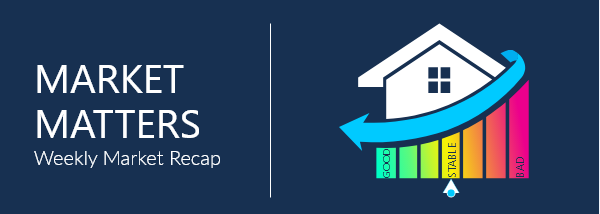Market Matters

This week we saw continued resurgence in new coronavirus case numbers as the markets have been keeping a close eye on new data from states, specifically those in the sunbelt. The rising case count, along with the start of second quarter earnings for US companies will be the focus of the market next week. Also keep an eye out for news on US-China relations and the November elections, as President Trump begins to campaign it wouldn’t be surprising to see the anti-China rhetoric get amped up further. Earnings are expected to be terrible, the commentary out of the earnings calls will be very important as the markets are trying to figure out where the economy goes in the second half of the year.
 Initial Jobless Claims
Initial Jobless Claims
Initial jobless claims fell by -99k to 1.314mln for the week ended July 4th. This latest decrease is now more than twice the average decline we’ve seen over the past 3 weeks (-46k), and this current claims count is down 5.553mln from the peak of 6.867mln reached during the week of March 28th. It is also the lowest weekly count since March 14th when claims were only 282K. We also see a revision to the prior week’s claims to 1.413mln from the originally reported 1.427mln print. Continued claims, which lag a week, fell by -698k to 18.062mln, as the result from the prior week was also revised lower to 18.76mln from an originally reported 19.29mln. With this, there is now more evidence of downside momentum in the continuing claims category, which is a good thing. Continuing claims are down by 2.5mln over the past 4 weeks and have now fallen 6.85mln since the peak of 24.912mln was reached during the week of May 9th.
 PPI
PPI
PPI (Producer Price Index) fell by -.2%, while the core measure dipped -.3%. If we take the core measure, which already strips out food and energy, and then remove trade services as well, we see a rise of +.3%. Year over year shows headline steady at -.8%, the ex-food/energy core down -.2% to +.1%, and the ex-food/energy/trade rose +.3% to -.1%. The wholesale/trade services index declined -1.8% vs. last month’s -.8% print. The BLS noted that 80% of the drop in the overall services index came down to a -7.3% in margins in machinery and vehicle wholesaling. On the goods side, prices were up by +.2%, with a nice recovery seen in the energy index, up +7.7%, while foods saw a -5.2% decline. Within those categories, the gasoline index jumped +26.3%, while prices for meats fell -27.7%.
 JOLTS
JOLTS
The JOLTS report for May estimates that there were 5.397mln job openings, which is an increase of +401k over the revised level of 4.966mln in April (orig. 5.046mln). Openings rose in accommodation and food services by +196k, retail trade by +147k, and construction by +118k. Job openings then decreased in information by -55k, federal government by -37k, and educational services by -27k. The hires level jumped 2.44mln, posting a 4.9% rate in May vs. the 3.1% in April. Year over year, that number is up from the 3.8% in May 2019. In the quits category, the rate was 1.6% vs. the 1.3% rate in April, and vs. the 2.4% seen a year ago. Overall, the job openings rate rose to 3.9% in May vs. the prior 3.7% rate in April, however, the openings rate is still down from the 4.6% in May 2019.
 ISM non-manufacturing index
ISM non-manufacturing index
The ISM non-manufacturing index for June posted at 57.1, up from the prior 45.5 in May. This is the largest single-month percentage point increase since the index started in 1997, vs. the largest one-month drop we saw in April at -10.7. The business activity index was up 25% from May, posting a 66 vs. 41, the new orders index posted up +19.7 at 61.6 vs. the May reading at 41.9, and the employment index increased by +11.3 to 43.1 from May’s 31.8. The supplier deliveries index post at 57.5, and although down -9.5 from May’s 67, slower deliveries are typical as an economy improves and customer demand increases. Overall, the June report shows the same measures of strength that we saw in the Manufacturing PMI. Of course, as we have witnessed broad-based reopening efforts and a very low bar set by the readings of the past two months, both indices will be watched closely as the Covid-19 pandemic continues to cause much uncertainty.

